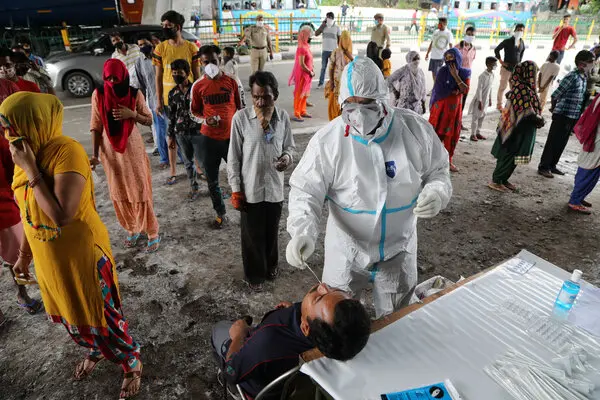India is witnessing a fresh increase in COVID-19 infections, with the number of active cases rising to 4,311 and seven new deaths reported. States such as Delhi, Uttar Pradesh, West Bengal, and Gujarat have recorded an upward trend in daily infections, prompting authorities to enhance monitoring and preventive measures.
As per the latest data from the Union Health Ministry, 219 new COVID-19 cases were added on June 3, bringing the active case count to 4,311 nationwide. While the numbers are not alarming compared to previous pandemic waves, the consistent rise has led to heightened surveillance, especially in densely populated regions.
Delhi has reported a steady increase in daily infections, with mild symptoms commonly seen among patients. In Uttar Pradesh, cities like Noida and Lucknow are seeing more cases, and local health officials have reactivated containment protocols in some areas. West Bengal has also witnessed a jump in respiratory-related hospital admissions, with COVID-19 cases contributing to the surge. Gujarat, particularly the districts of Surat and Ahmedabad, has shown a similar trend, prompting advisories on mask usage and social distancing.
Medical professionals believe this rise may be linked to newer Omicron sub-lineages, particularly the JN.1 variant, known for its quick transmission but relatively milder symptoms. Most patients are experiencing low to moderate illness, with severe cases limited to the elderly and those with underlying conditions.
Agencies such as the Indian Council of Medical Research (ICMR) and National Centre for Disease Control (NCDC) are actively conducting genome sequencing to monitor virus mutations. Officials have stressed that while the increase in numbers is being closely observed, there is no current indication of a severe wave. Nonetheless, they advise people to stay cautious.
To mitigate further spread, health departments in the affected states have scaled up COVID testing, isolation protocols, and public health messaging. The public has been urged to wear face masks in crowded spaces, sanitize hands regularly, and get booster shots, especially those in vulnerable categories.
Additionally, vaccination centers are being advised to maintain sufficient stock of precaution doses, and state authorities are prepared to activate emergency response strategies if required.
Conclusion:
Although the ongoing rise in COVID-19 cases remains under control, the situation calls for continuous monitoring and responsible public behavior. Authorities are taking proactive steps to avoid escalation, and public cooperation remains essential in minimizing the impact of this resurgence.



